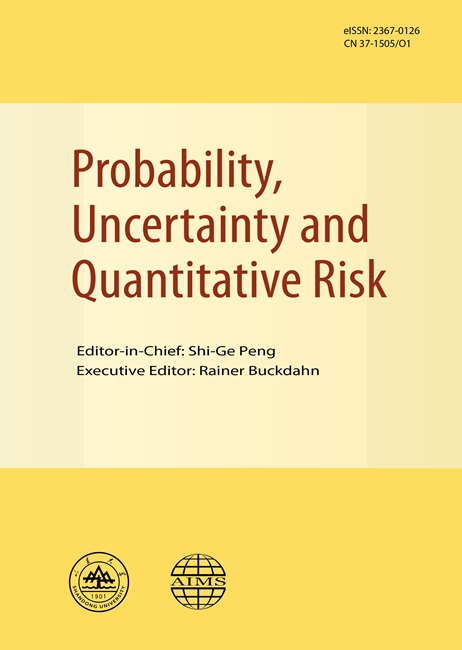金融市场流动性的无限维模型
IF 1
2区 数学
Q3 STATISTICS & PROBABILITY
引用次数: 0
摘要
我们考虑流动性的动态市场模型,其中不匹配的买入和卖出限价订单存储在订单簿中。所得的净需求面构成了模型的唯一输入。我们使用双参数布朗运动来建模需求,因为(i)需求曲线上不同的点对应的是由不同信息驱动的订单,(ii)一般来说,当需求曲线由有限数量的因素驱动时,无套利理论的风险方程的市场价格没有解,从而允许套利。我们证明了如果驱动噪声是无限维的,那么在模型中不存在套利。在等效鞅测度下,出清价格是鞅,期权可以在无套利假设下定价。我们考虑了模型的几个参数化,并展示了将需求曲线指定为价格函数的数量,而不是价格作为数量函数的优势。在线附录介绍了模型的基本经验分析:使用实际订单信息进行校准,使用蒙特卡罗模拟计算期权价格,并与观察数据进行比较。本文章由计算机程序翻译,如有差异,请以英文原文为准。
An infinite-dimensional model of liquidity in financial markets
We consider a dynamic market model of liquidity where unmatched buy and sell limit orders are stored in order books. The resulting net demand surface constitutes the sole input to the model. We model demand using a two-parameter Brownian motion because (i) different points on the demand curve correspond to orders motivated by different information, and (ii) in general, the market price of risk equation of no-arbitrage theory has no solutions when the demand curve is driven by a finite number of factors, thus allowing for arbitrage. We prove that if the driving noise is infinite-dimensional, then there is no arbitrage in the model. Under the equivalent martingale measure, the clearing price is a martingale, and options can be priced under the no-arbitrage hypothesis. We consider several parameterizations of the model and show advantages of specifying the demand curve as a quantity that is a function of price, as opposed to price as a function of quantity. An online appendix presents a basic empirical analysis of the model: calibration using information from actual order books, computation of option prices using Monte Carlo simulations, and comparison with observed data.
求助全文
通过发布文献求助,成功后即可免费获取论文全文。
去求助
来源期刊

Probability Uncertainty and Quantitative Risk
STATISTICS & PROBABILITY-
CiteScore
1.60
自引率
13.30%
发文量
29
审稿时长
12 weeks
期刊介绍:
Probability, Uncertainty and Quantitative Risk (PUQR) is a quarterly academic journal under the supervision of the Ministry of Education of the People's Republic of China and hosted by Shandong University, which is open to the public at home and abroad (ISSN 2095-9672; CN 37-1505/O1).
Probability, Uncertainty and Quantitative Risk (PUQR) mainly reports on the major developments in modern probability theory, covering stochastic analysis and statistics, stochastic processes, dynamical analysis and control theory, and their applications in the fields of finance, economics, biology, and computer science. The journal is currently indexed in ESCI, Scopus, Mathematical Reviews, zbMATH Open and other databases.
 求助内容:
求助内容: 应助结果提醒方式:
应助结果提醒方式:


